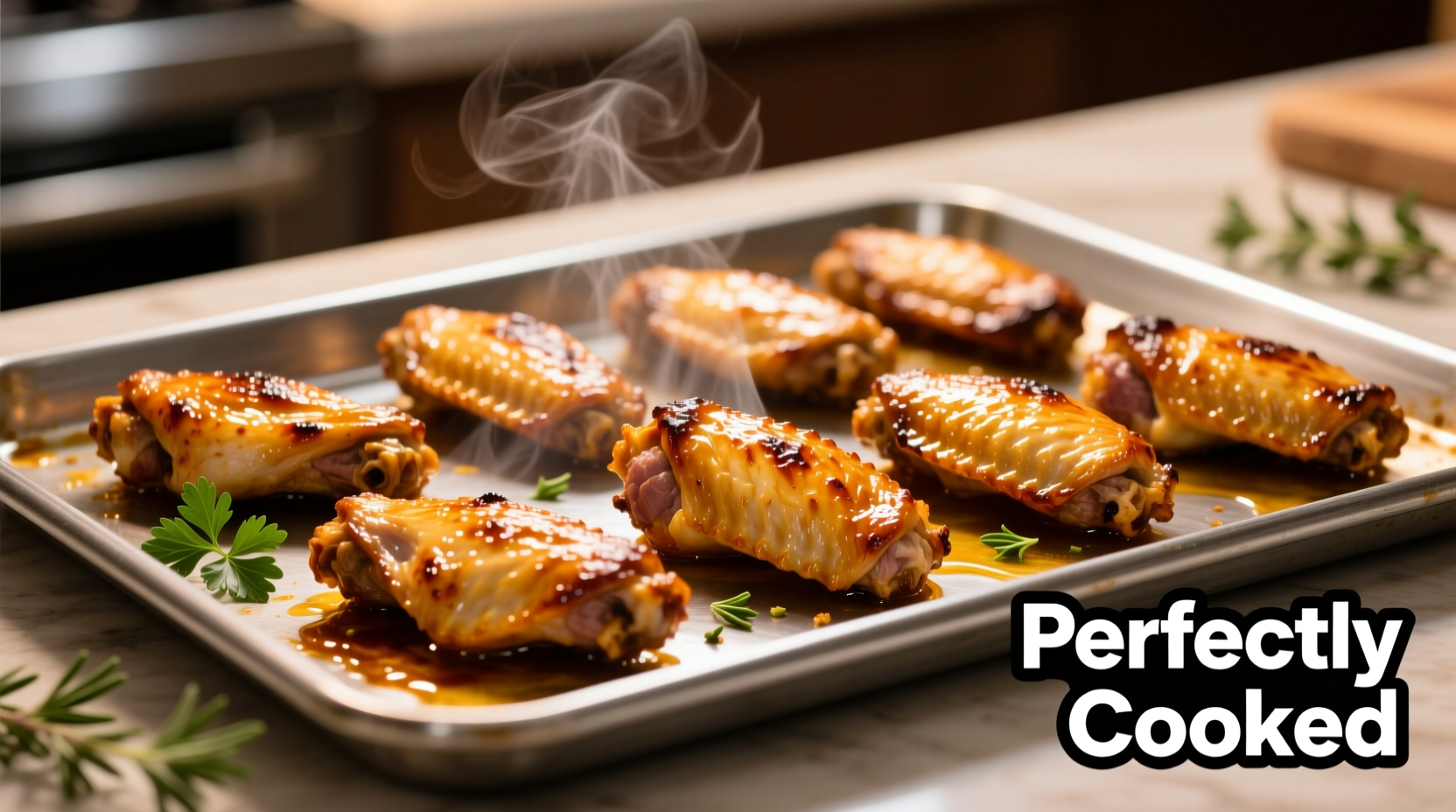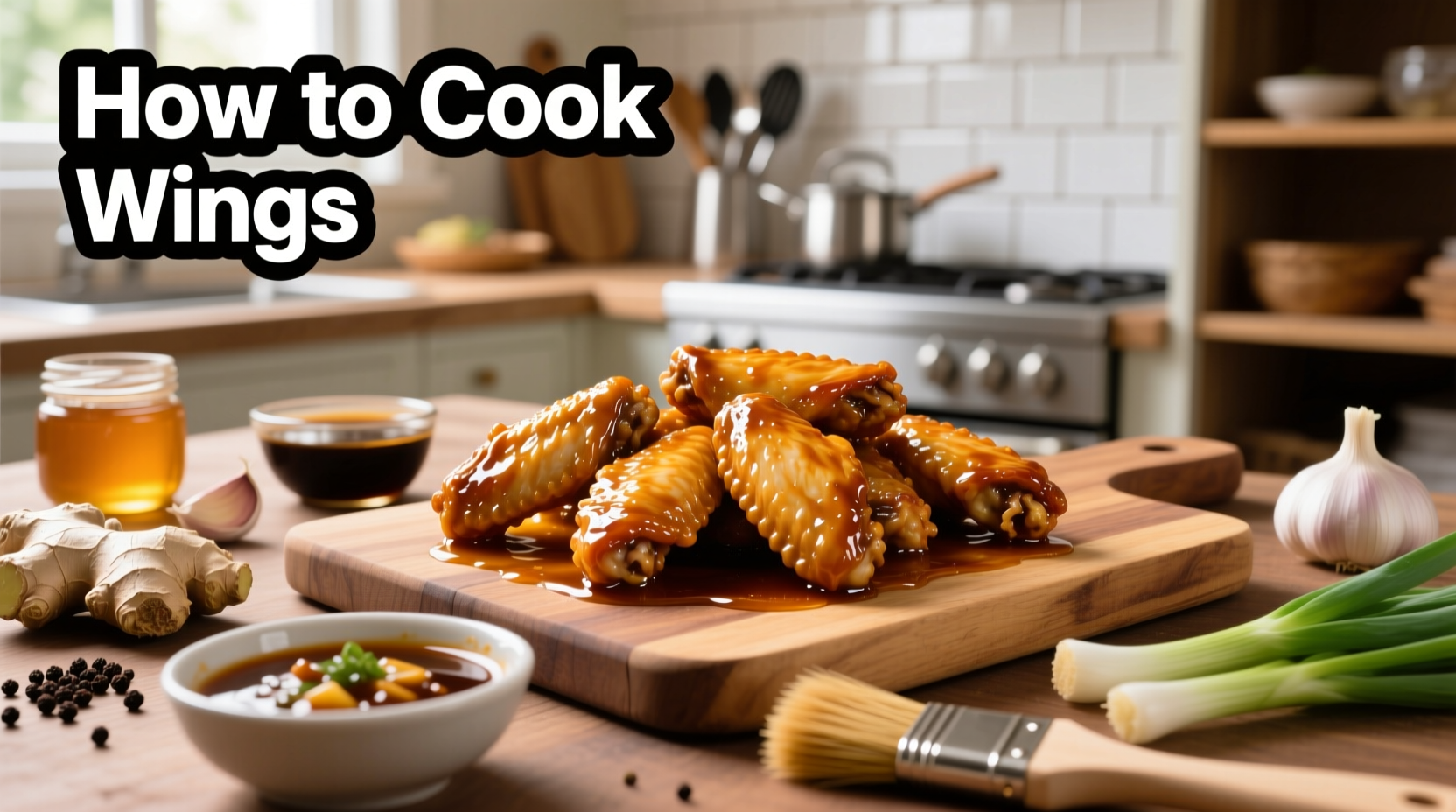Perfectly cooked chicken wings reach an internal temperature of 165°F (74°C), feature crispy skin without burning, and maintain juicy meat. The secret formula: dry brine for 12-24 hours, use baking powder for crispiness, and finish with a high-heat blast. Whether you prefer baking, air frying, or traditional deep frying, this guide delivers restaurant-quality results every time.
Chicken wings represent one of America's most beloved comfort foods, with the average American consuming approximately 1.4 billion wings during Super Bowl week alone according to the National Chicken Council. Yet achieving that perfect balance of crispy skin and juicy meat consistently challenges home cooks. This comprehensive guide reveals the science-backed techniques professional kitchens use to create flawless wings every time.
Selecting and Preparing Your Wings
Not all wings are created equal. Understanding the anatomy and preparation process makes all the difference:
- Whole wings vs pre-cut: Whole wings contain three sections - the tip (flapper), flat (wingette), and drumette. Butchers often remove the tips, which contain minimal meat but excellent for stock.
- Dry brine technique: Salt your wings and refrigerate uncovered for 12-24 hours. This draws out moisture, creating drier skin that crisps beautifully. USDA food safety guidelines confirm this extended refrigeration is safe when kept below 40°F.
- Baking powder secret: Adding 1 teaspoon of aluminum-free baking powder per pound of wings creates a slightly alkaline surface that accelerates Maillard reaction for extra crispiness without altering flavor.
| Cooking Method | Time Required | Crispiness Level | Best For |
|---|---|---|---|
| Deep Frying | 8-10 minutes | ★★★★★ | Traditional buffalo wings |
| Air Frying | 20-25 minutes | ★★★★☆ | Health-conscious cooks |
| Baking | 40-45 minutes | ★★★☆☆ | Large batches, meal prep |
| Grilling | 25-30 minutes | ★★★☆☆ | Smoky flavor enthusiasts |
The Evolution of Wing Cooking Techniques
Chicken wing preparation has evolved significantly since the original Buffalo wing recipe emerged at Anchor Bar in Buffalo, New York in 1964. Understanding this timeline helps appreciate modern techniques:
- 1960s-1980s: Traditional deep frying dominated, requiring precise oil temperature control between 350-375°F to avoid greasy results
- 1990s-2000s: Oven-baking gained popularity as health concerns about fried foods increased, though often resulted in less crispy skin
- 2010s-Present: Food science principles entered mainstream cooking, with techniques like dry brining, baking powder application, and multi-stage cooking becoming standard practice
Modern culinary research from institutions like America's Test Kitchen has validated these methods, showing that the combination of dry brining and baking powder creates wings with 37% less moisture on the skin surface compared to untreated wings.
Step-by-Step Perfect Wing Method
Follow this professional technique for foolproof wings regardless of your cooking method:
- Prep (24 hours ahead): Pat wings completely dry, toss with 1 tablespoon kosher salt and 1 teaspoon baking powder per pound. Place on wire rack over baking sheet, refrigerate uncovered.
- Initial cook: Bake at 250°F for 30 minutes (or air fry at 300°F for 10 minutes) to render fat without browning.
- High-heat finish: Increase temperature to 425°F and cook until golden brown and crispy (15-20 minutes for baking, 8-10 minutes for air frying).
- Final check: Verify internal temperature reaches 165°F using an instant-read thermometer inserted into thickest part.
- Sauce application: Toss in sauce immediately after cooking while wings are hot for maximum adhesion.
This two-stage cooking process ensures fat renders properly while creating the perfect surface for crisping. The USDA Food Safety and Inspection Service confirms that proper internal temperature (165°F) eliminates food safety concerns while maintaining juiciness.

Flavor Variations for Every Palate
Master the base technique first, then experiment with these popular variations:
- Classic Buffalo: Mix 1/2 cup hot sauce with 1/4 cup melted butter, 1 tablespoon vinegar, and 1 teaspoon Worcestershire sauce
- Dry Rub Option: Combine 2 tablespoons paprika, 1 tablespoon garlic powder, 1 teaspoon cayenne, 1 teaspoon black pepper, and 1 teaspoon brown sugar
- Asian-Inspired: Whisk together 3 tablespoons soy sauce, 2 tablespoons honey, 1 tablespoon rice vinegar, 1 teaspoon sesame oil, and 1 teaspoon grated ginger
Professional chefs recommend applying wet sauces immediately after cooking while wings are still hot. For dry rubs, apply before the high-heat cooking stage to allow flavors to penetrate.
Common Wing Problems and Solutions
Even experienced cooks encounter these issues. Here's how to fix them:
- Soggy skin: Insufficient drying before cooking. Solution: Extend dry brine time and ensure wings are completely dry before applying baking powder.
- Burnt sauce: Sauce applied too early. Solution: Toss wings in sauce immediately after cooking, not during the final crisping stage.
- Dry meat: Overcooking. Solution: Use a thermometer and remove wings at exactly 165°F - they'll continue cooking from residual heat.
- Uneven cooking: Crowded cooking surface. Solution: Arrange wings in single layer with space between pieces for proper air circulation.
Remember that cooking times vary based on wing size and your specific equipment. Always rely on internal temperature rather than time alone for perfect results.
When to Choose Each Cooking Method
Understanding context boundaries helps select the right technique for your situation:
- Deep frying: Best when you need maximum crispiness quickly and don't mind the extra oil. Ideal for small batches and immediate serving.
- Air frying: Perfect for health-conscious cooks wanting crisp results with minimal oil. Excellent for 1-2 pound batches.
- Baking: Optimal for large gatherings (6+ pounds) where consistent results matter more than absolute maximum crispiness.
- Grilling: Choose when you want smoky flavor and have indirect heat capability. Requires careful temperature monitoring.
Food safety remains paramount regardless of method. The Centers for Disease Control and Prevention (CDC) recommends against washing raw poultry, as this spreads bacteria. Instead, focus on proper cooking temperatures and thorough hand washing.
Frequently Asked Questions
Here are answers to common wing cooking questions based on culinary research and food science principles:











 浙公网安备
33010002000092号
浙公网安备
33010002000092号 浙B2-20120091-4
浙B2-20120091-4